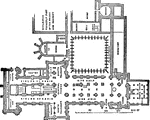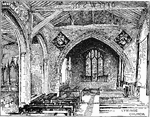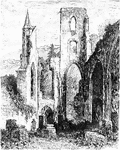
Abbey of Allerheiligen
Abbey of Allerheiligen, or All Saints, this abbey is beautifully situated on the banks of the Lierbach,…

Melrose Abbey
Melrose Abbey is a Gothic style Christian monastery located in Melrose, Scotland. The Abbey was founded…
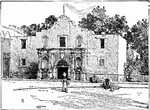
The Alamo
The Battle of the Alamo was fought in February and March 1836 in San Antonio, Texas. The conflict, a…
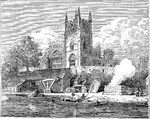
Church of All Saints, Wilden, Worcestershire
All Saints Church in Wilden, Worcestershire about one mile to the north east of Stourport. It was designed…

All Saints' Church, Brixworth
All Saints' Church, Brixworth, is an outstanding example of early Anglo-Saxon architecture located in…
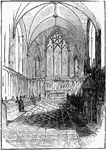
Armagh Cathedral Choir
The origins of the cathedral are related to the construction in 445 of stone church on the Druim Saileach…
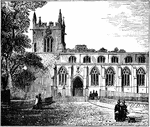
Bangor Cathedral, Caernarvonshire
The site of Bangor Cathedral was originally occupied by St. Deiniol's monastery, established in the…
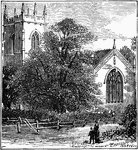
Battlefield Church, Shrewsbury
It was roughly here that the Battle of Shrewsbury of 1403 took place. A church, commonly known as "Battlefield…

Bede's Tomb, Durham Cathedral
He is well known as an author and scholar, and his most famous work, Historia ecclesiastica gentis Anglorum…
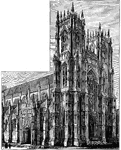
Beverly Minster
It is generally regarded as the most impressive (architecturally speaking) church in England that is…
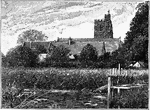
Bray Church, Near Maidenhead, Berks
The Church of England parish church of St Michael was built in 1293, supposedly to replace a Saxon church…
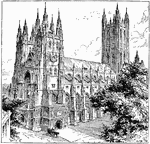
Canterbury Cathedral
The cathedral was founded by Augustine in 602 AD and dedicated to St. Saviour. The Cathedral's first…
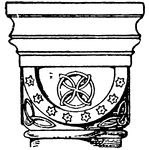
Romanesque Cushion Capital
This Romanesque Cushion Capital is found in the Abbey church in Germany. It is a design of a half sphere…
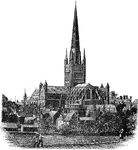
The Cathedral of East Anglia (Norwich)
Norwich Cathedral is a Church of England cathedral in Norwich in Norfolk, England dedicated to the Holy…
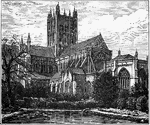
Wells Cathedral, Somerset
Built between 1175 and 1490, Wells Cathedral has been described as "the most poetic of the English Cathedrals".…
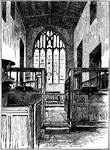
An Unrestored Chancel
"Chancel" is an architectural term for the space around the altar at the liturgical east end of a traditional…
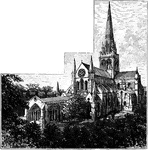
Chichester Cathedral
Chichester Cathedral in Chichester, West Sussex, England is an Anglican Cathedral. The Cathedral was…
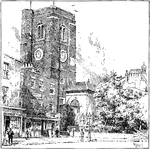
Old Church at Chelsea
Formerly it was the parish church of Chelsea when it was a village, before it was engulfed by London.…
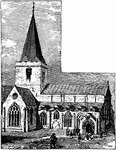
The Old Church, Perth, N.B.
During the Middle Ages, Perth's only parish church was the Burgh Kirk of St. John the Baptist. With…
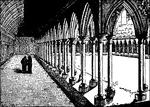
A Cloister at a French Monastery from the Middle Ages
This illustration shows one fragment of a French cloister built in the Middle Ages. The architecture…
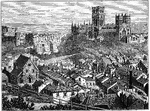
Durham Cathedral and Castle
The Cathedral Church of Christ, Blessed Mary the Virgin and St Cuthbert of Durham, commonly referred…

Durham Cathedral from the Wear
Founded in AD 1093, it remains a centre for Christian worship today. It is generally regarded as one…

Ely Cathedral
Ely Cathedral (in full, The Cathedral Church of the Holy and Undivided Trinity of Ely) is the principal…
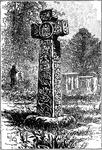
Eyam Churchyard Cross
Eyam churchyard contains a Saxon cross dated to the 7th or 8th centuries. Initially, it was located…
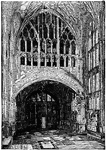
Gloucester Cathedral
"Lady Chapel of Gloucester Cathedral, England, looking toward the nave." -Whitney, 1911
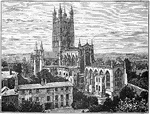
Gloucester Cathedral (Abbey) Church
The cathedral consists of a Norman nucleus (Walter de Lacy is buried there), with additions in every…
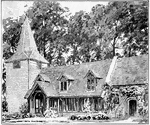
Greenstead Church
Greensted Church, in the small village of Greensted, near Chipping Ongar in Essex, England, is the oldest…
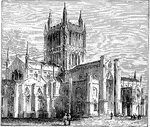
Hereford Cathedral
In the war between King and Parliament (the English Civil War) the city of Hereford fell into the hands…
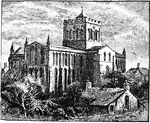
Hexham Abbey
There has been a church on the site for over 1300 years since Etheldreda, Queen of Northumbria made…

Jarrow Church Tower
The present parish church of St. Peter's at Wearmouth, on the north bank of the River Wear, occupies…
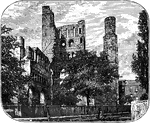
Ruins of Kelso Abbey
Kelso Abbey is a Scottish abbey built in the 12th century by a community of Tironensian monks who had…
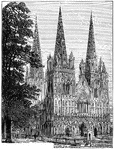
Lichfield Cathedral
Lichfield Cathedral is situated in Lichfield, Staffordshire, England. It is the only medieval English…
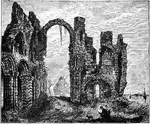
Lindisfarne Priory Ruins before 1860
The monastery of Lindisfarne was founded by Irish born Saint Aidan, who had been sent from Iona off…
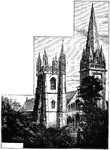
Llandaff Cathedral
Llandaff Cathedral is the seat of the Anglican Bishop of Llandaff (of the Church in Wales), situated…
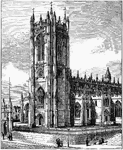
Manchester Cathedral
Manchester Cathedral is a Medieval church located on Victoria Street in central Manchester and is the…
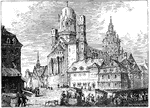
Mayence Cathedral
Now known as Mainz Cathedral. Originally St. John's Church, then St. Salvator, consecrated in 911 by…

Melrose Abbey Ruins
Melrose Abbey is a Gothic-style abbey in Melrose, Scotland. It was founded in 1136 by Cistercian monks,…

Minster Church, Isle of Sheppey
In English usage, Minster is an honorific title attached to certain major medieval churches. Most of…
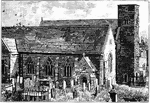
Monkwearmouth Church
The present parish church of St. Peter's at Wearmouth, on the north bank of the River Wear, occupies…

Old St. Paul's Cathedral
Old St. Paul's is a name used to refer to the Gothic cathedral in the City of London built between 1087…
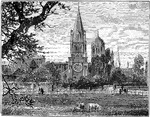
Oxford Cathedral
In 1522, the priory was surrendered to Cardinal Wolsey, having selected it as a site for his proposed…
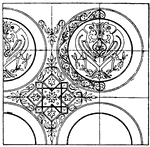
Textile Pattern
This textile pattern is a 12th century design made of silk and gold. It is found in a tomb in the Abbey…
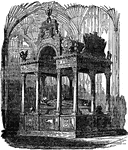
Queen Elizabeth's Tomb
"Queen Elizabeth's Tomb: In the North Aisle of Henry VII's Chapel, Westminster Abbey." — Chambers,…
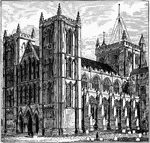
Ripon Cathedral
People have been coming to worship and pray at Ripon for more than 1,350 years. The Cathedral building…
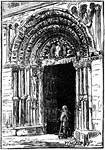
Rochester Cathedral, West Door
The present building is widely regarded as one of the finest Norman cathedrals in the country, with…
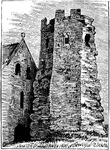
Roman Lighthouse, and Part of St. Mary's Church, Dover
The lighthouse on the Eastern Heights still stands in the grounds of Dover Castle to 80 foot (24 m)…
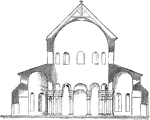
Santa Costanza
"Section of the Church of S. Constantia at Rome. The simplest desctiptions of this kind of building…
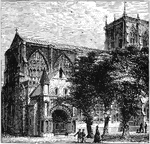
Sherborne Minster
The Abbey Church of St. Mary the Virgin at Sherborne in the English county of Dorset, is usually called…

Sompting Church Tower
The church was originally built by the Saxons around 960, then was adapted by the Normans when William…

St. Alban's Monastery Gate
This is the only building to survive. It was built c.1365 after its predecessor had been destroyed in…
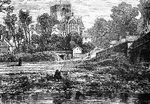
St. Asaph Cathedral
St Asaph Cathedral, (Welsh: Eglwys Gadeiriol Llanelwy) at St Asaph, Denbighshire, north Wales, is sometimes…
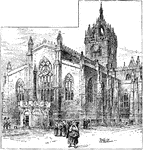
St. Giles' Cathedral, Edinburgh
A prominent feature of the Edinburgh skyline, St. Giles' Cathedral or the High Kirk of Edinburgh is…
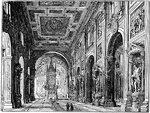
St. John's Church, Lateran Palace, Rome
The Basilica of St. John Lateran (Italian: Basilica di San Giovanni in Laterano) is the cathedral of…
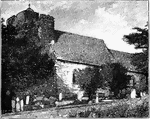
St. Martin's Church, Canterbury
St. Martin's was the private chapel of Queen Bertha of Kent in the 6th Century before Augustine arrived…
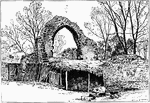
St. Pancras Church Ruins, Canterbury
St Pancras Old Church is a Church of England parish church on Pancras Road in North London. It is believed…
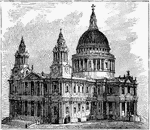
St. Paul's Cathedral
St Paul's Cathedral, is the Anglican cathedral on Ludgate Hill, in the City of London, and the seat…
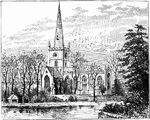
Stratford-on-Avon Church
The Collegiate Church of the Holy and Undivided Trinity, Stratford-upon-Avon is a parish church in the…
